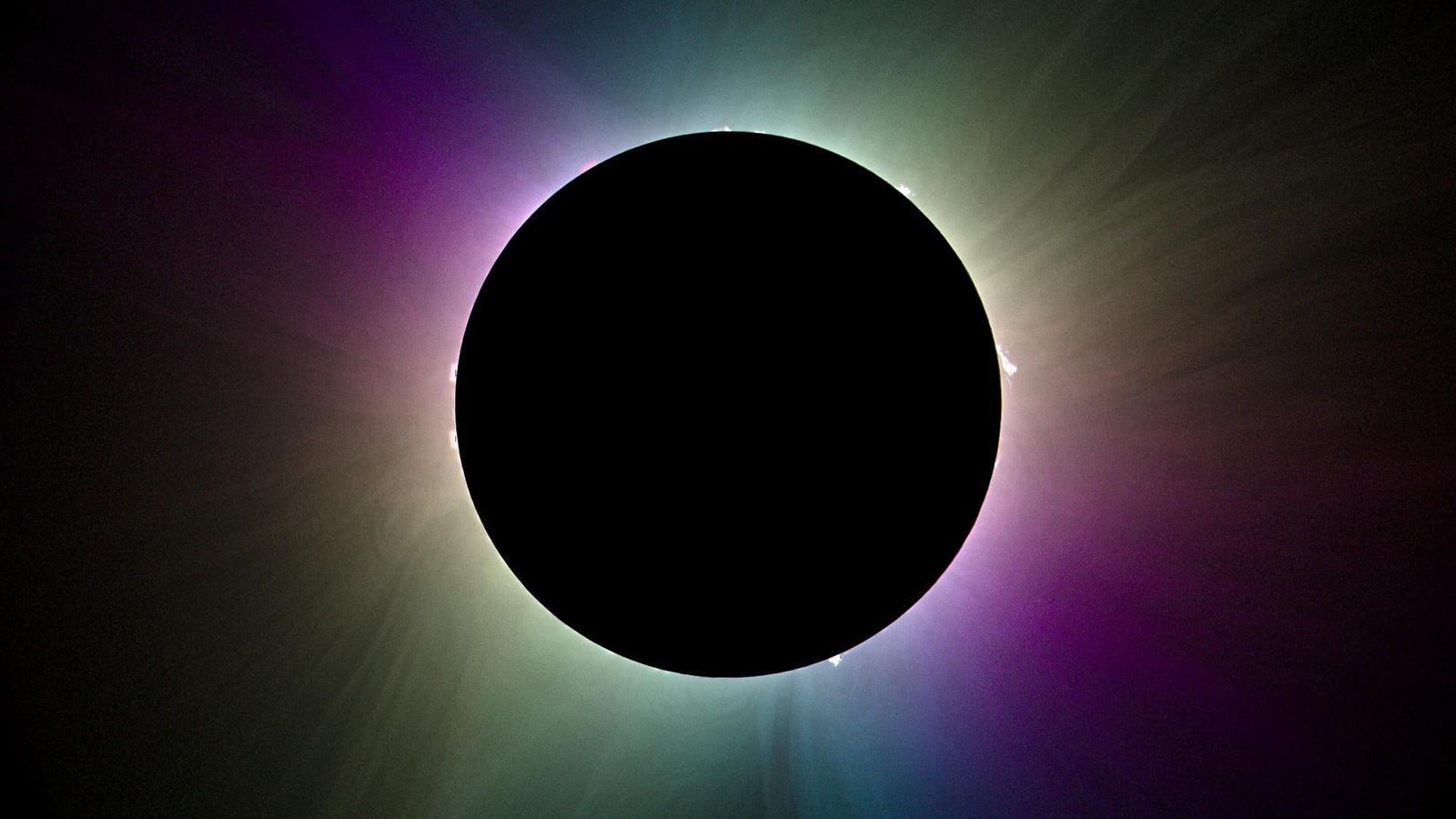This high-resolution processed image of the April 8 eclipse shows the Sun’s outermost corona. … [+]
The total solar eclipse a few weeks ago saw some stunning photos — especially from NASA astronauts aboard the International Space Station — but this image (above) is arguably the most important.
It comes from the 2024 Citizen Continental-America Telescopic Eclipse Experiment (CATE), for which 35 teams of people across the path of totality from Texas to Maine captured images of the Sun’s outer atmosphere, its corona, during total darkness when the Moon Receipt. The tablet blocked the sun.
Polarized light
The purpose was to measure the polarization of light from the Sun’s corona. “You’re familiar with this because sometimes you put a polarizing filter right on your face—sunglasses that filter out certain angles of polarized light,” said CATE 2024 principal investigator Dr. Amir Kaspi. A filter placed on each pixel of the sensor allows us to measure four different polarization angles everywhere in the corona, providing much more information than just measuring the brightness of the light.
These initial images of a new set of sensitive, high-speed, visible light and infrared … [+]
Scattered away
This corresponds to the K corona, called the Kontinuierlich (German for Continuum), the part that you see in total up to about 1.5 solar radii. The viewer in the moon’s shadow sees scattered light from the sun’s surface that reaches all the electrons in the corona before scattering. If you want to know the three-dimensional structure of the corona, its density and how it changes over time, you need to know where these light waves come from. You do this by measuring the polarization of the visible light as the sun’s corona at its total length. That’s what a fleet of small telescopes did as part of the CATE 2024 project.
The secrets of Corona
All of this is important because scientists don’t know why the Sun’s corona is so hot—hundreds of times hotter than the Sun’s surface. Solving this puzzling mystery is crucial because it is in the corona—usually affected by intense visible light from the Sun’s surface and so challenging to study—that hosts the eruptions that cause geomagnetic storms around Earth. “Total solar eclipses are relatively rare and provide unique opportunities for scientists to study the hot atmosphere above the visible surface of the Sun,” Caspi said.
Across the country, 35 teams of more than 200 volunteers collected eclipse data using … [+]
The ultimate goal
The ultimate goal of CATE 2024 is a continuous 60-minute high-resolution movie of the solar corona. The result should be exciting, but the project was an incredible achievement. “Through CATE 2024, Eclipse has provided a bonding experience between scientists and communities along the way, contributing to this incredible and inspiring event,” Caspi said. “We hope the public will have a new interest and understanding of the Sun and its mysteries.”
Wishing for a clear sky and big eyes
#strange #photo #total #solar #eclipse #sheds #light #mysteries #sun
